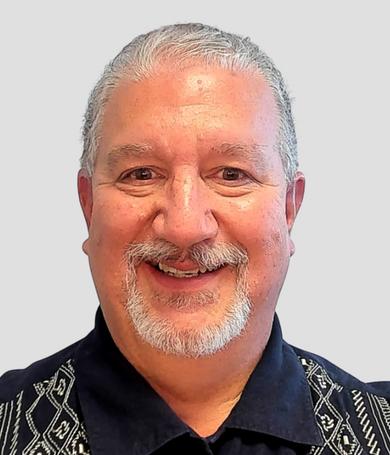
6 minute read
GPS for Careers: Retaining Millennials and
from The Constellation Newsletter of Capella University's School of Bus, Tech and Healthcare Admin
by SoBTH
Gen Z
Organizations across the nation are struggling to recruit and retain valuable, highly competent Millennials and members of Generation Z National retention rates for both cohorts are often challenged by a less than positive connection between the employee and organization (Gallop, 2022) Organizations seeking to retain employees must ensure that the pathways of advancement are clear, expectations are understood by everyone, and nothing important is cloaked in secrecy
Advertisement
Career maps help ensure that career pathways are transparent, allowing employees to plan for their future
One approach to depicting pathways of advancement is the use of detailed career maps These maps provide the users with accurate information on what advancement opportunities exist within the organization and how they can reach them An effective career map shows the user what education, experience, certifications, and other credentials are required for advancement to specific organizational roles
Good career maps describe roles in detail Such descriptions can help people in specific fields grow by knowing when to accept rotational opportunities in related fields to fill out their skill set Career maps also provide information on any existing leadership development programs within the organizations They explain the relationships between the leadership development program and advancement in the organization, a linkage that is not always present in organizational policies
With new generations come varying sets of expectations and goals in the workplace (Gallop, 2022) Millennials and members of Gen Z want to clearly understand how to move forward and grow In many organizations, advancement milestones are not visible, and it is expected that leaders manage promotions, with the support of human resources However, career maps are more effective, especially when subject matter experts in different professional fields contribute to transparency by developing technically accurate career maps, helping leaders, human resources, and the employee understand what the employee can do to be eligible for advancement
Effective career maps provide employees the ability to plan for the long term, helping them achieve professional and personal goals, ensuring they can manage their career and balance their other responsibilities in a thoughtful manner
Career maps help employees see what kinds of roles they may want to grow into and what education or training they might need When there is a ladder for advancement and each rung is clearly labeled, employees have the information to decide whether to leave for an opportunity at a different organization or to stay where they are and grow There hasn’t been any significant research done on how career maps affect turnover, organizational commitment, or retention rates, but employees frequently ask their organizations for career maps
by Dr Al Gorriaran
Things to consider:
"Organizational senior leaders can work with HR and career field subject matter experts to create career maps "
Supervisors can use career maps to engage and guide employees toward their professional goals
Millennials and members of Generation Z may be retained with increased levels of engagement when they have a career map to guide them The career map is a valuable tool which is unlikely to cost the organization much in the way of resources

Reference
Gallop, (2022) Retrieved From https://www gallup com/workplace/231587/millenni als-job-hopping-generation aspx
Meet the School of Business Faculty Advisory Board
The School of Business, Technology, and Health Care Administration (SoBTH) Business Faculty Advisory Board (FAB) is a diverse and exemplary group of faculty who represents their community and provide advice on pressing part time and adjunct (PT/ADJ) faculty issues to the Associate Dean and Dean of the SoBTH
The FAB was developed in response to a survey where PT/ADJ Faculty expressed the desire to have an entity that would respond to their issues and also help keep them informed The FAB is tasked to disseminate information from the top of SOBTH and the university directly to PT/ADJ Even more important, it also works to give the PT/ADJ a path to voice ideas to SOBTH leadership
FAB members represent the voice of their peers, working to improve the experience for all SOBTH faculty Meetings throughout the academic year encourage discussion on new initiatives and emergent issues, ensuring that the faculty voice is heard

The FAB meets quarterly each year The SoBTH FAB recommendations help to influence SoBTH goals, services, and overall effectiveness Accomplishments so far include that the three-discussion requirement in FlexPath was modified, a faculty mentoring program was established, and faculty are now informed of changes to classes Let’s keep the moment going! We want to hear from you
All PT/ADJ SOBTH Faculty are encouraged to access the anonymous suggestion box for questions or suggestions on how to improve teaching and processes in SOBTH: https://strategicedinc sharepoint com/sites/MBAFAB/SitePages/Home aspx
You can also reach out directly to the faculty board members, as listed below The FAB’s success will be dependent on your feedback and involvement Together, we can continue to ensure that all voices are heard and work to continually improve our processes for ourselves and, by extension, our learners, and the university
FAB Board Administrators
Chris Fichera
Kristine Ziola-Pardell
Michael McGivern
Henry Weber (MBA Core Faculty)
Kevin Krier (Undergrad Core Faculty
Darlene Barnard (Faculty Director)
I am Dr Chris Fichera I am a Part-time Faculty member of the School of Business, Technology, and Health Care Administration I teach both Guided and FlexPath courses for the MBA Capstone, Project Management, and Analytics Full-time, I have been a Senior Program Manager supporting both manned and unmanned spaceflight for more than 40 years.
What I love about what we do at Capella University is our commitment to Competency-based learning, allowing our learners to use today what they learn and not wait years to apply their newly acquired skills in the workplace
I am Dr Kristine Ziola-Pardell What I love about what we do at Capella University is our commitment to Competency-based learning, allowing our learners to use today what they learn and not wait years to apply their newly acquired skills in the workplace.


I am Dr Michael McGivern I have been working for Capella since 2002, and my favorite part has been conversing with the students about the class work and even more important, about their future goals and aspirations It is very exciting to me to be a small part of their lifelong journey to assist them to take their learnings “out of the classroom and into reality”

The Intersection of Critical Thinking and Academic Honesty
Where once “critical thinking” seemed an academic phrase or a corporate buzzword, today the fact is that everyone needs to think critically perhaps a dozen times each day From recognizing hyperbole to fake news, analyzing data to making decisions, critical thinking is a must for every human in all fields

The headline article in this Constellation issue played with the idea of clickbait, the internet tendency to make headlines sound as salacious as possible to attract attention Unfortunately, many people may not read past the headline; sometimes they read an interesting headline and pass it along as fact, and before you know it a legend is born
At Capella, we see critical thinking as a way of life Our leaders use critical thinking to evaluate learner and faculty needs and shape policy Our faculty use it to stay abreast of issues in their field and to instruct their learners We teach our learners to think critically, evaluating resources, considering biases, and even exploring differing data or opinions.
A critical thinker:
• Is not swayed by headlines.
• Does not present their opinion as fact
• Does research to understand a concept before forming a firm opinion.
• Is open to differing opinions and evidence
This use of research and analysis to aid our critical thinking leads us to the citing of sources Any reputable university will require its learners to seek out and analyze information, then use that information to support their work in classes In all schools within Capella this means citing sources using APA format
It’s not fun Sometimes it is not easy But it is important Why?
Citing sources serves a variety of purposes Among these are:
Giving credit where it is due
Demonstrating that you have done research and are knowledgeable on a topic
Giving the audience a place to go to if they want more information on a topic.
Capella expects faculty, staff, and learners to think critically, to look at data and research, to couple that with their own knowledge and experience, and to intentionally think through the situation to make evidence-based decisions We also expect our faculty, staff, and learners to maintain the highest degree of academic integrity by properly citing their work, paraphrasing and giving credit as appropriate, and properly quoting a source when the words themselves are so valuable that they need to be used
Thinking critically and writing with integrity are the foundation upon which we share our ideas Stay tuned to this space for more in-depth articles on how to write with integrity and credibility in the future
by Dr Rebecca Snarski




